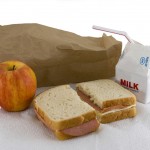 What is the easiest way to improve my diet?
What is the easiest way to improve my diet?
There are two very simple steps to improving diet.
Eat a rainbow – try to eat as many different coloured fruit and vegetables every day.
Eat natural – think about the food you eat, how close is it to the original product? For example, steak is far closer to the original cow than a burger, raw carrot sticks are far closer to the original carrot than carrot soup.
Follow these two simple rules and your diet will improve very quickly and you’ll notice the associated benefits of increased energy, better complexion, a slimmer waist line, etc. Follow this simple rule with everything you eat and drink; this includes snacks, which tend to be most teenagers downfall.
How much exercise should I do?
Guidelines for young people are 60 minutes activity every day including 30 minutes of exercise where your heart rate is raised, for example playing sport, running, dance class, swimming, cycling.
What is a healthy shape and size for me?
There is a children’s BMI. However, many professionals agree BMI should only be one factor when considering a healthy shape and size for teens. However, it is more accurate than the adult BMI as it considers age, height and weight. On the downside it only considers an average for your age which makes it inaccurate because, as we all know, teens mature at different ages. Discourage comparing teens with friends and classmates. Every teen develops at a different rate. Even as adults we are all very different shapes. Instead, pay attention to how much extra fat lies around the mid-section.
What is the best exercise for me?
Find an activity you enjoy! Use your imagination; there are so many activities to choose from……Indoor activities – fitness class, dance class, sports such as basketball and volley ball, boxercise. Outdoor activities – netball, football, hockey and other team sports, running, power walking, fitness class, cycling. Water activities – sailing, swimming, windsurfing. Home activities – wii fit, exercise video, trampolining, exercise video, hula hooping, skipping. And the list goes on…….
Find something you enjoy or mix and match with several different activities. Do something with your friends or by yourself. Include some strength and flexibility work into your exercise such as a bodyweight workout, gym workout or yoga class to promote full body fitness.
Maggie Ayre is a Personal Trainer and Nutrition Advisor. More information about Maggie’s work with teenagers can be found at www.maggieayre.com or www.femalefitnessrevolution.com.
 Subscribe
Subscribe






